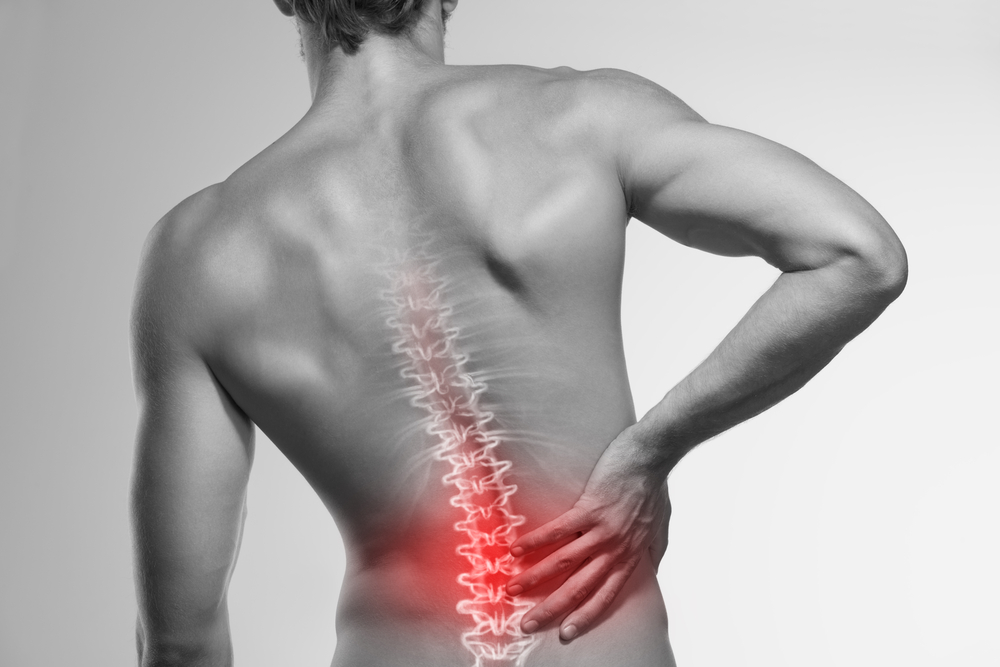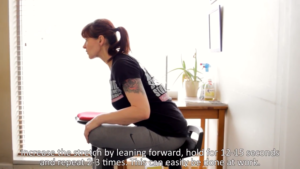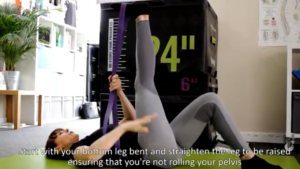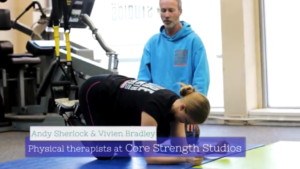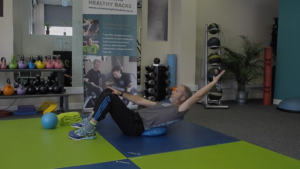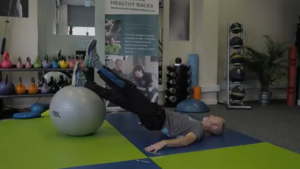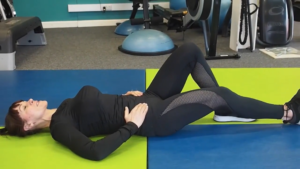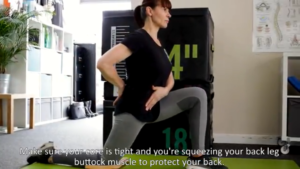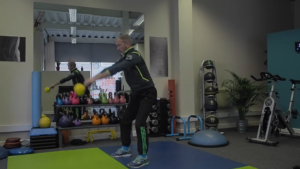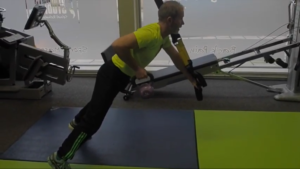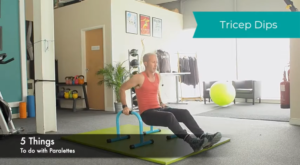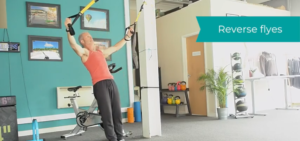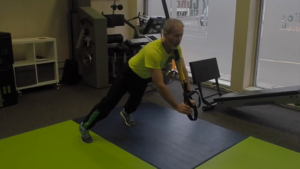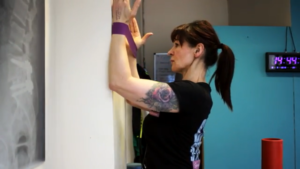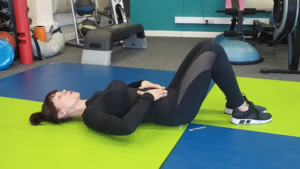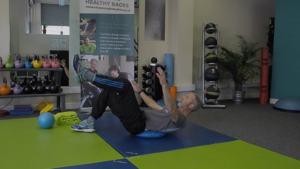With the approximate thickness of a pencil and running from the low back down to the feet, the sciatic nerve is the longest nerve in the body.
It originates in the lower part of the spine, travels through the muscles in the buttocks, branches out down the leg and attaches to the foot.
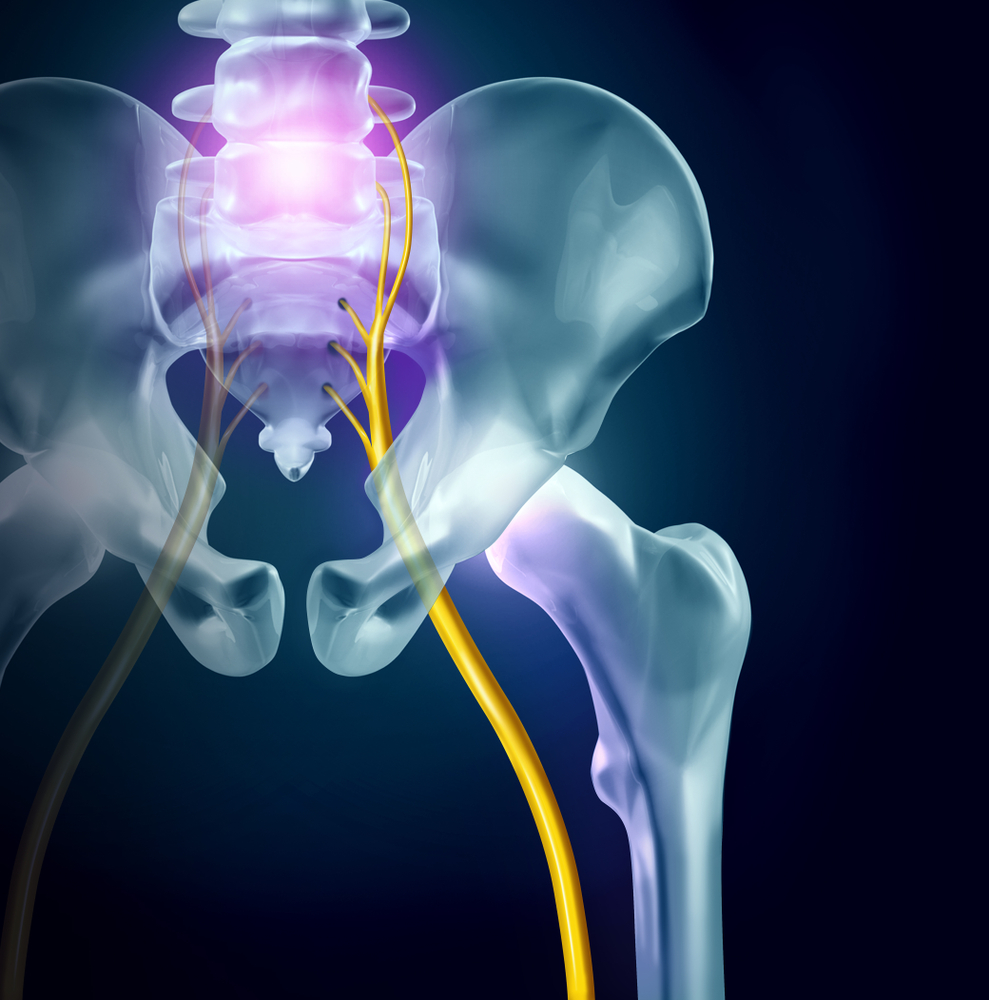
It can become irritated by muscles in its path (most commonly in the buttock or leg) tightening or going into spasm, or by a bulging or herniated disc in the low back pressing into it.
It is also associated with degeneration of the spine, or spinal stenosis, which causes a narrowing of the tunnel which the nerve passes through.
This irritation causes the pain down the buttocks, leg or foot which is commonly referred to as sciatica.
It is also associated with degeneration of the spine, or spinal stenosis, which causes a narrowing of the tunnel which the nerve passes through.
What Are The Symptoms?
- Pins & needles in the leg or foot
- Pain in the low back or buttock, travelling down into the leg and/or foot
- Numbness in the leg or foot
- Pain when you laugh or cough
What Causes Sciatica?
Slipped Disc
A slipped or herniated disc is the most common cause of sciatica.
It happens when the outer edge of the intervertebral disc ruptures and the inner jelly-like centre pushes out and presses on the sciatic nerve.
Sometimes the outer edge doesn’t break, but the disc protrudes. This is referred to as a bulging disc and can also put pressure on the nerve.
Pregnancy
As the bump grows, your centre of gravity shifts.
This can lead to an increased arching of the back which in turn tilts the pelvis forwards.
This can sometimes mean that the muscles in the buttocks tighten and pinch on the nerve. Some woman also find that the expanding uterus can press directly on the nerve towards the end of pregnancy, or even as the baby starts to move into position, it can rest on the nerve.
Disc Degeneration/Arthritis
As we age, our intervertebral discs can deteriorate. Over time (or sometimes due to injury), the disc can become arthritic, narrow or shrink.
This can increase the risk of the disc rupturing and therefore potentially giving rise to sciatica.
The degenerative process could also lead to the development of spinal stenosis, a narrowing of the bone canal through which the sciatic nerve passes which in turn compresses the nerve.
Smoking
Smoking has been associated with a higher risk of developing sciatica.
This could be due to the reduced blood flow to the discs, leading to degeneration.
Obesity
Excessive body weight places additional pressure on the back, increasing the rate of degeneration.
This increased pressure also increases the risk of disc injuries.
Piriformis Syndrome
The Piriformis muscle is located in the buttocks, near the top of the hip joint.
The sciatic nerve passes through the piriformis muscle and can be compressed if the piriformis muscle is tight or goes into spasm.
This can be caused by prolonged sitting (particularly on hard surfaces), repetitive action during sports (i.e. football, running) or climbing stairs.
What Is The Treatment For Sciatica?
One of the most successful treatments for sciatica is a physical therapy programme.
A key aim is to reduce the pressure on the sciatic nerve. This can be achieved by strengthening the back muscles and core strength work. This increased strength will help support the spine.
A programme should also include exercises to support correct posture.
Sports massage and stretching/flexibility work also helps by reducing inflammation and easing any tight muscles which may be constricting the nerve.
At Core Strength Studios, we include the above in our rehabilitation programmes for clients with sciatica. In addition, the root cause of the problem will be advised on, and any additional treatment included accordingly.
If you think you have sciatica and would like to speak to a specialist for an assessment and to discuss treatment options, we would like to invite you to a complimentary 60-minute consultation. To register, click here, complete the form and we’ll be in touch to make your booking.

